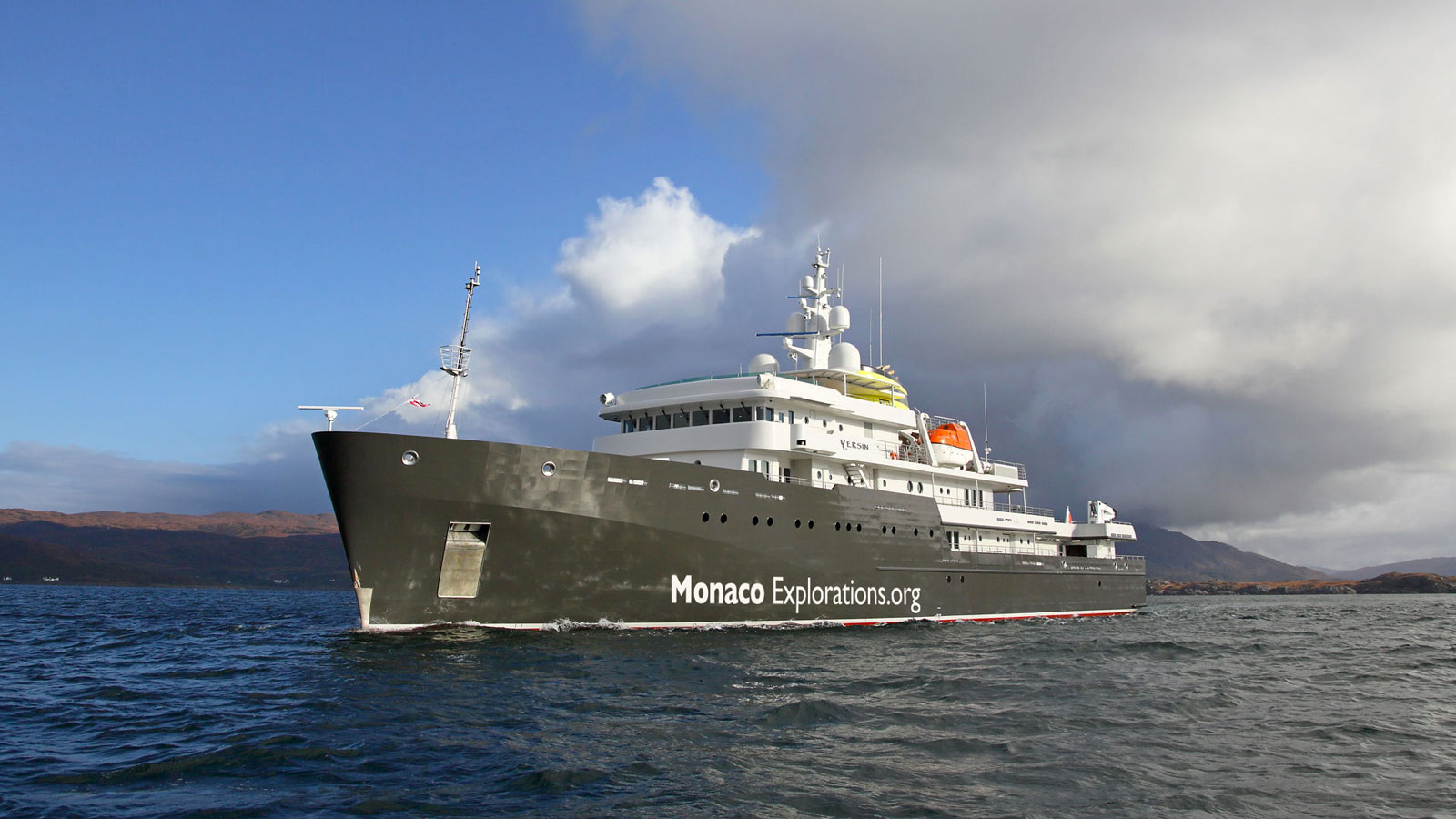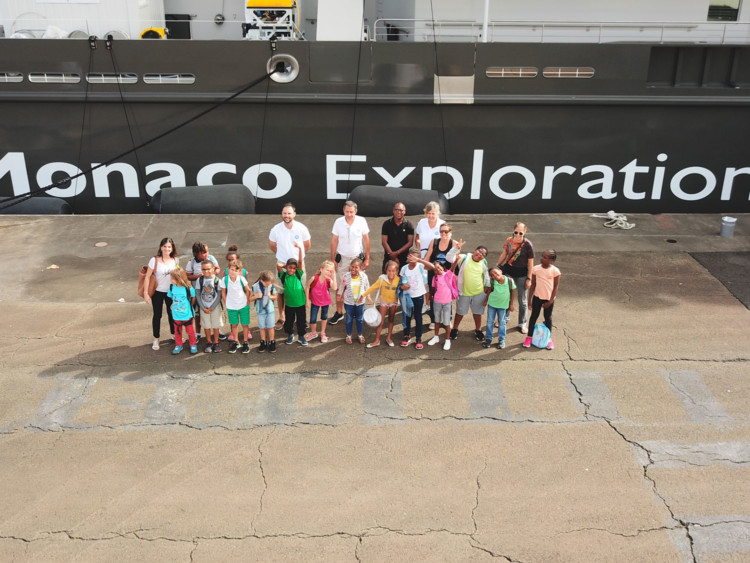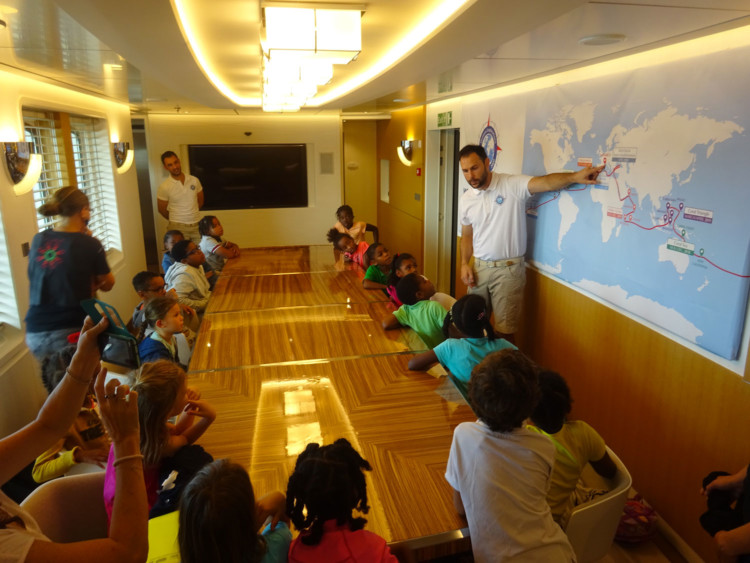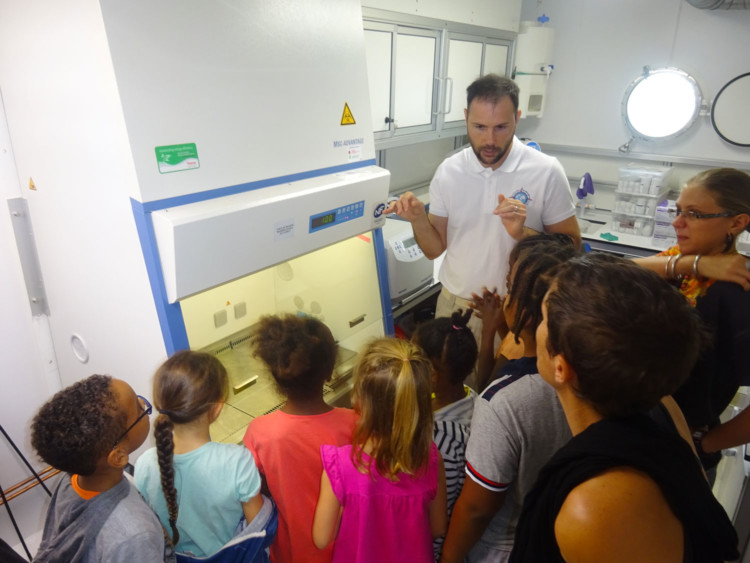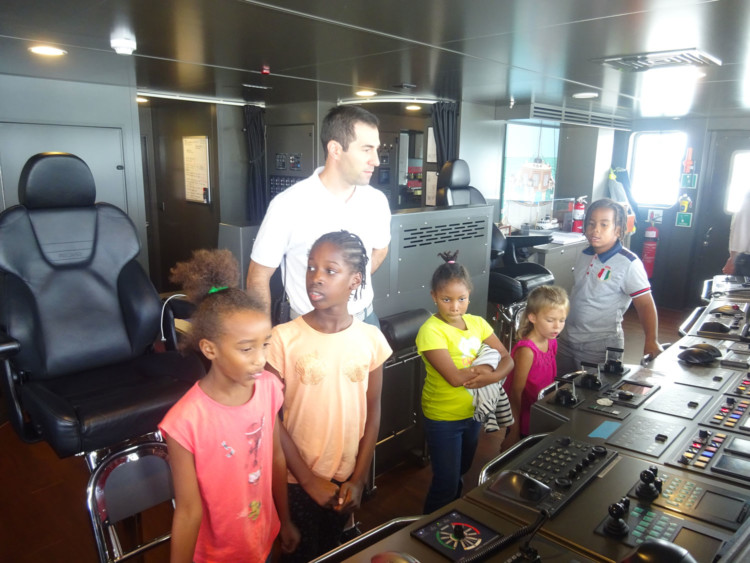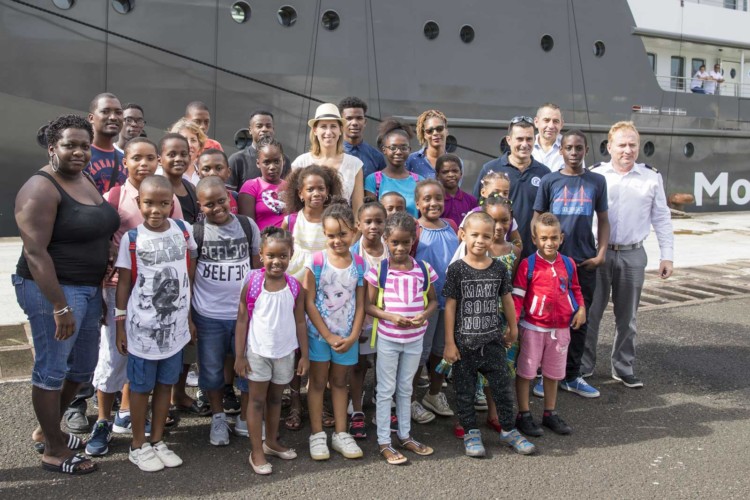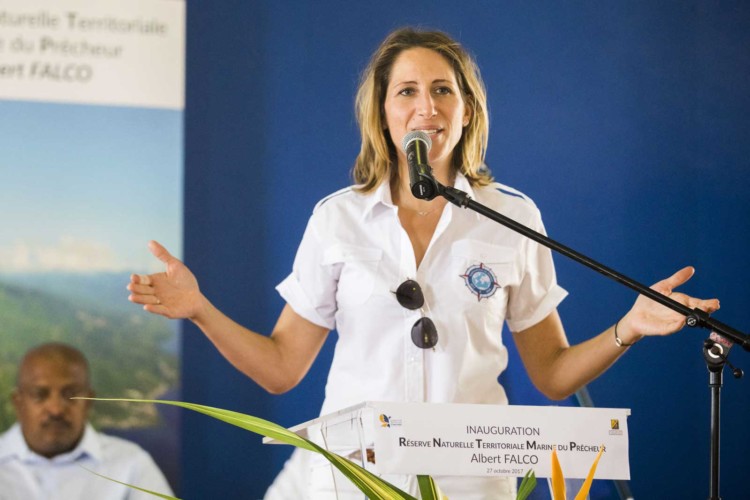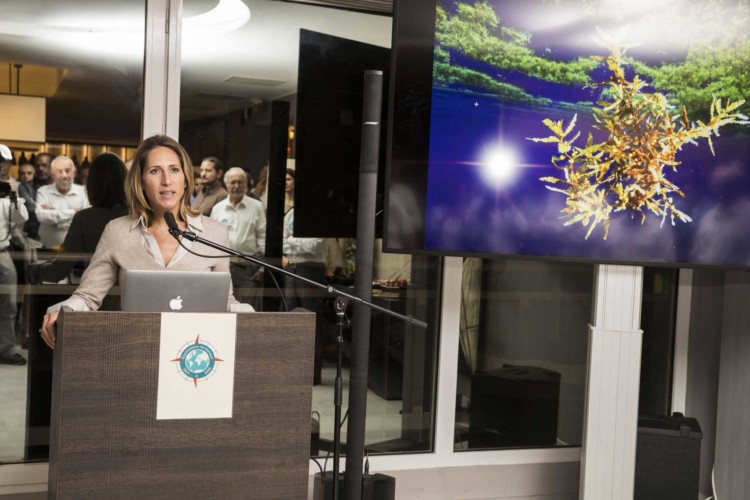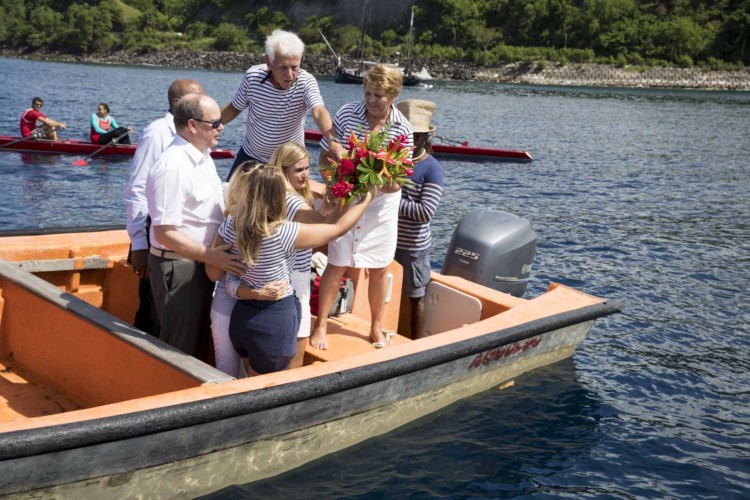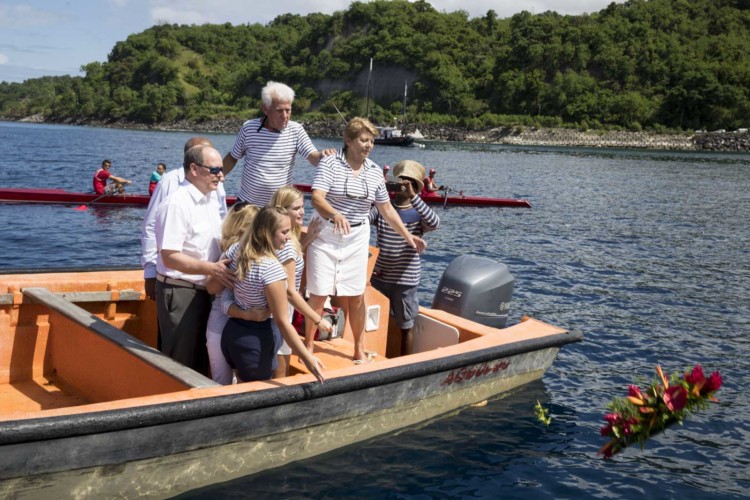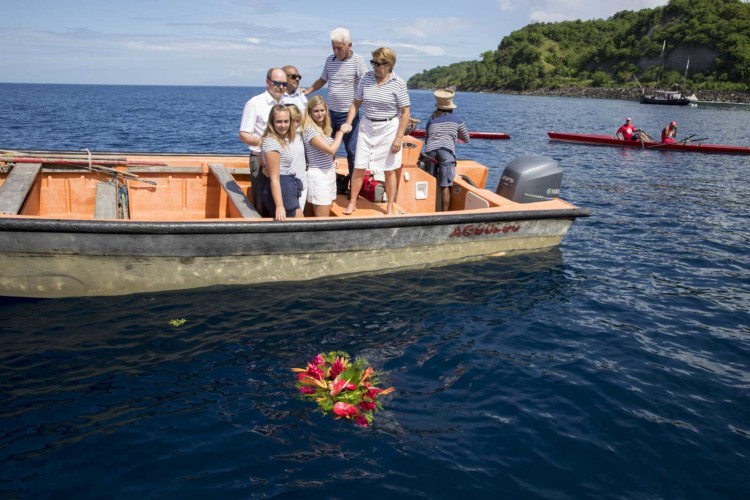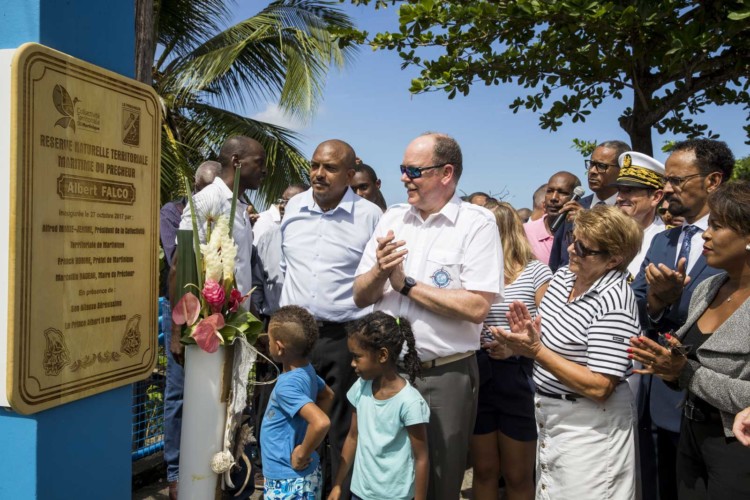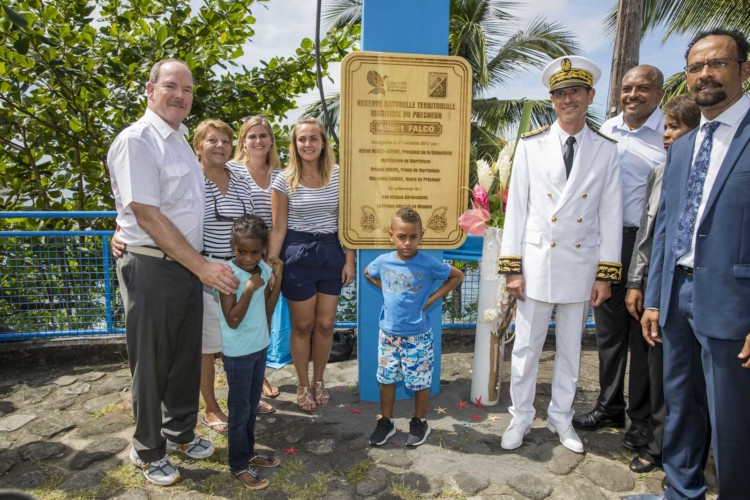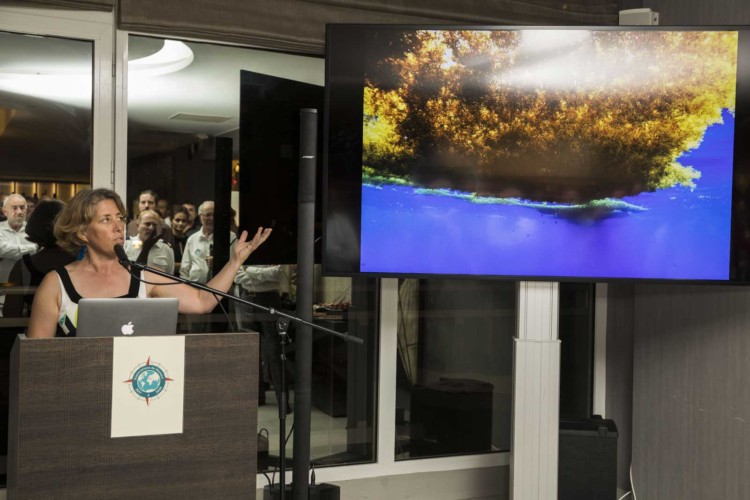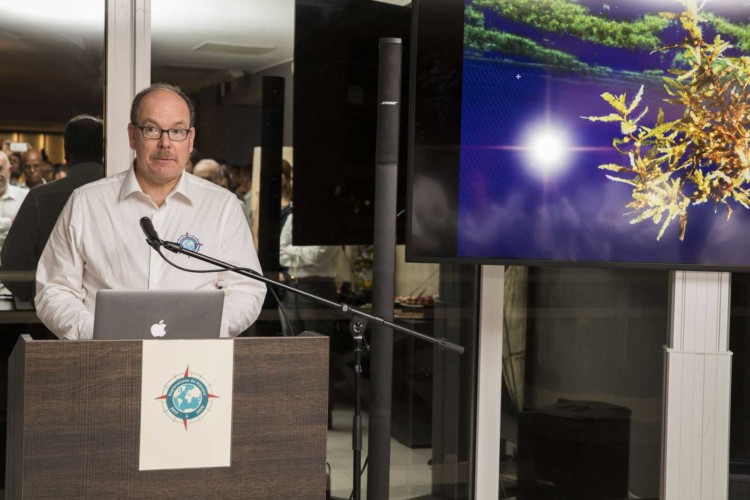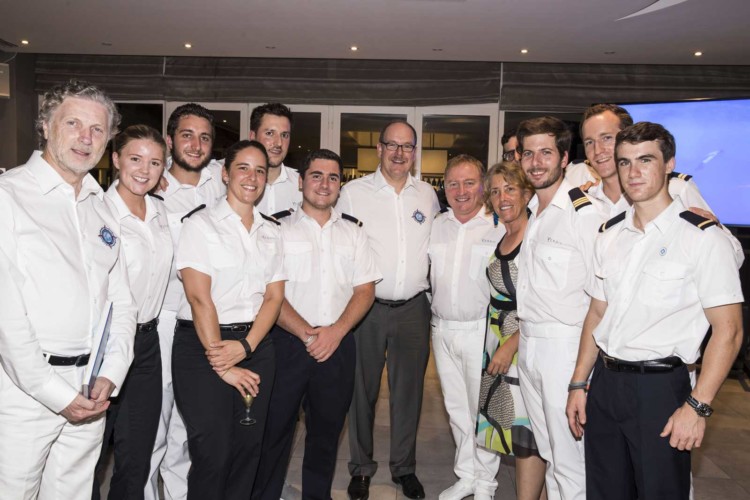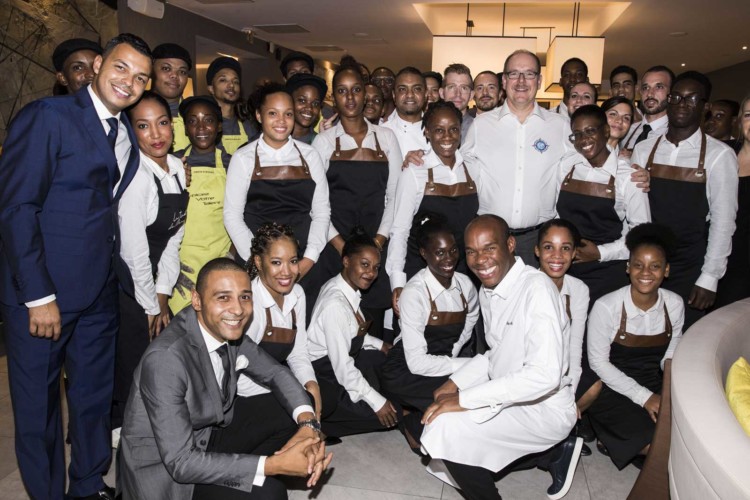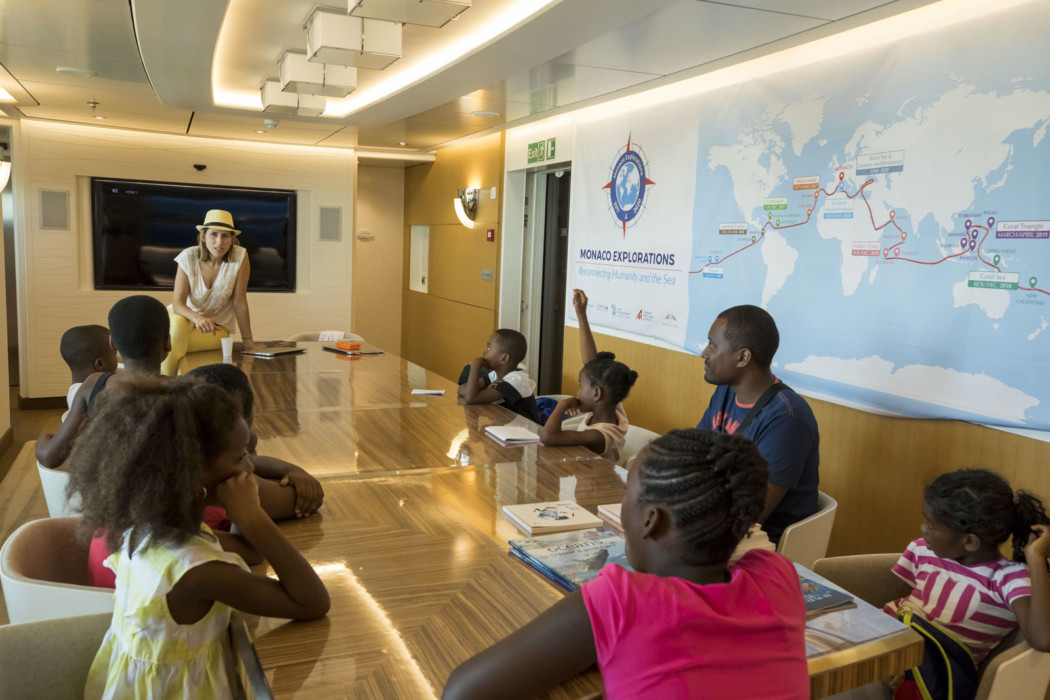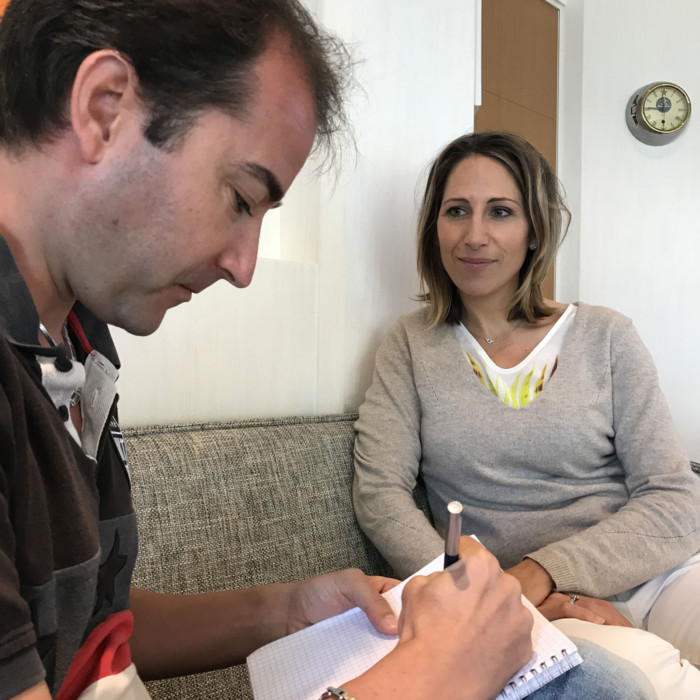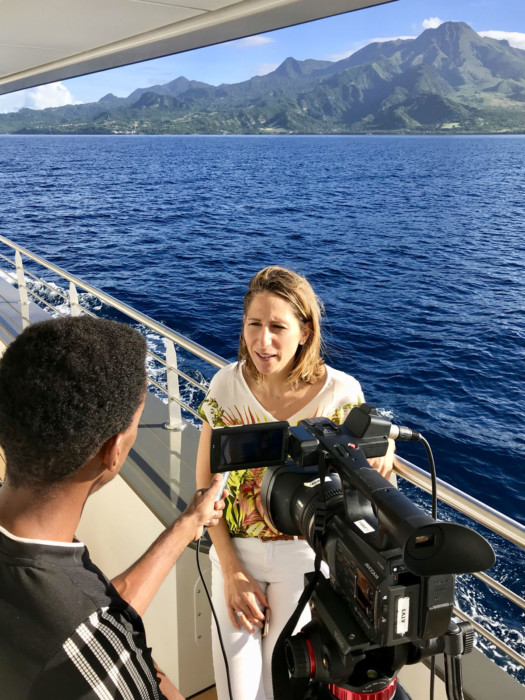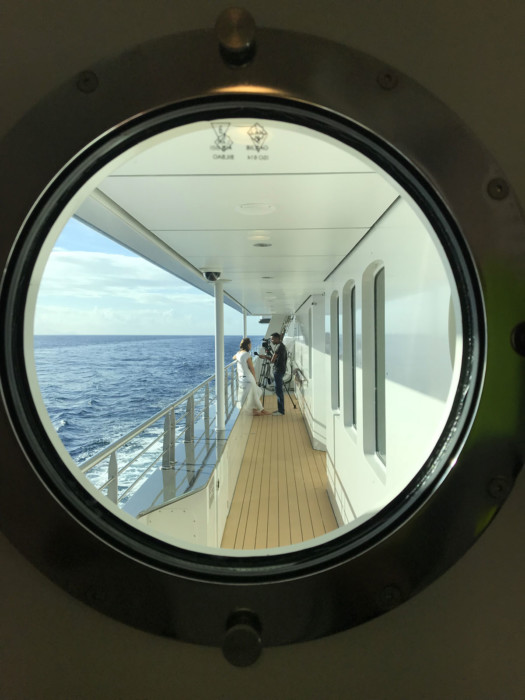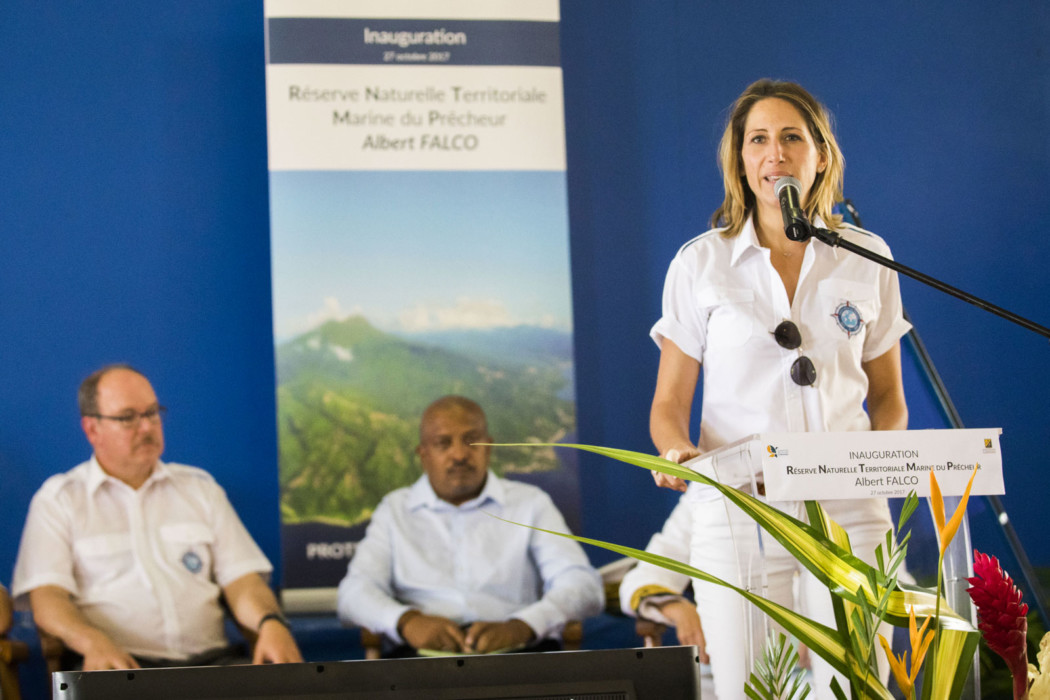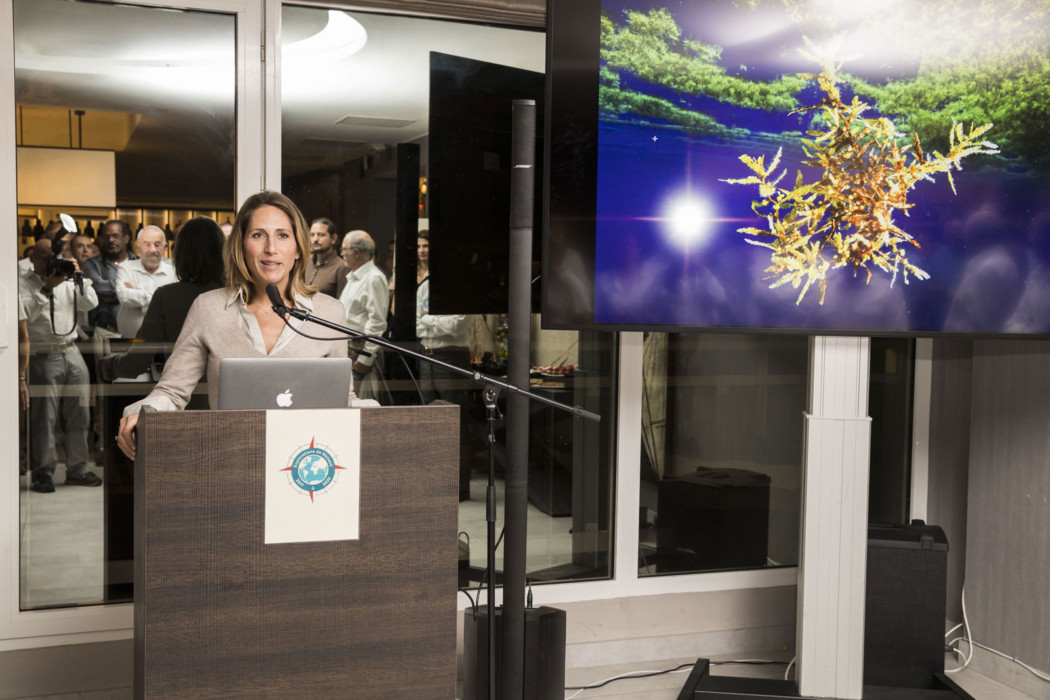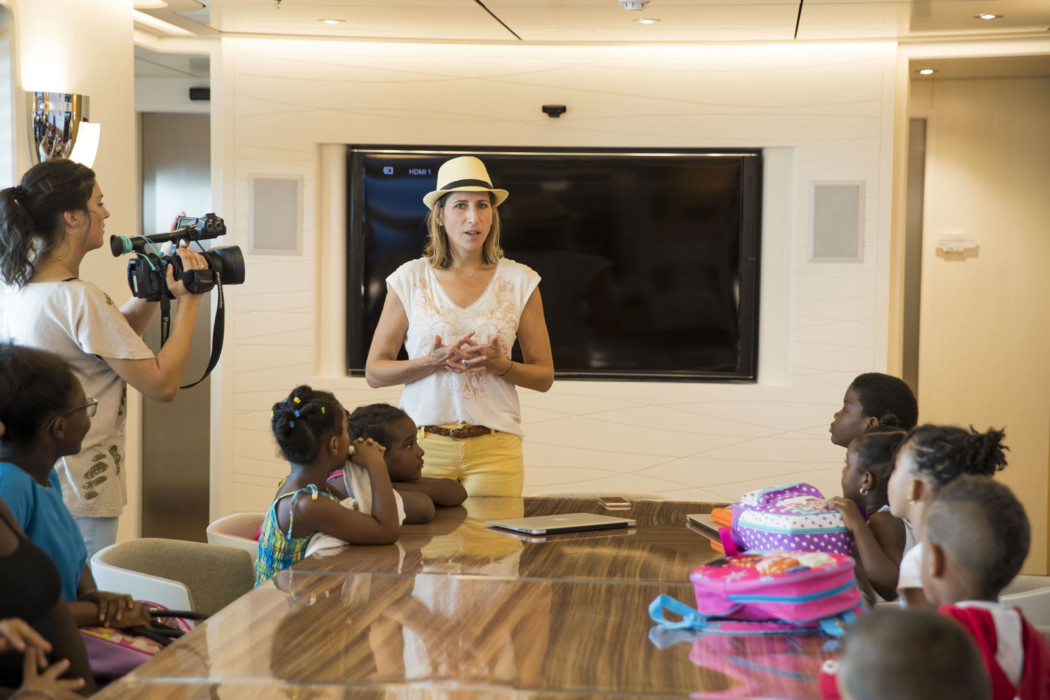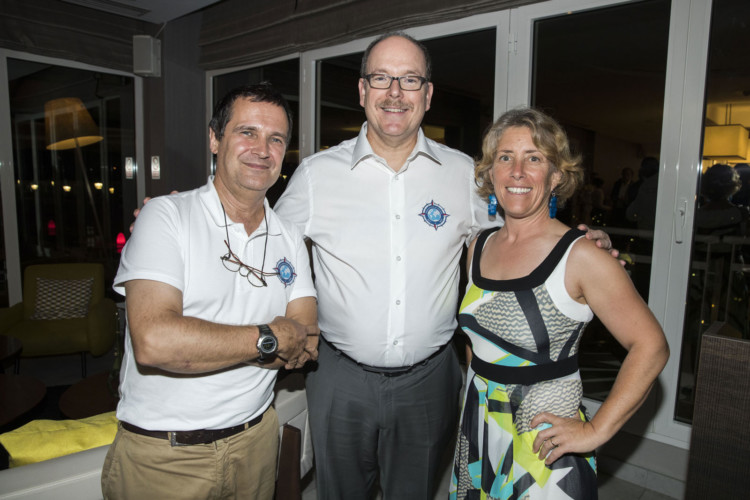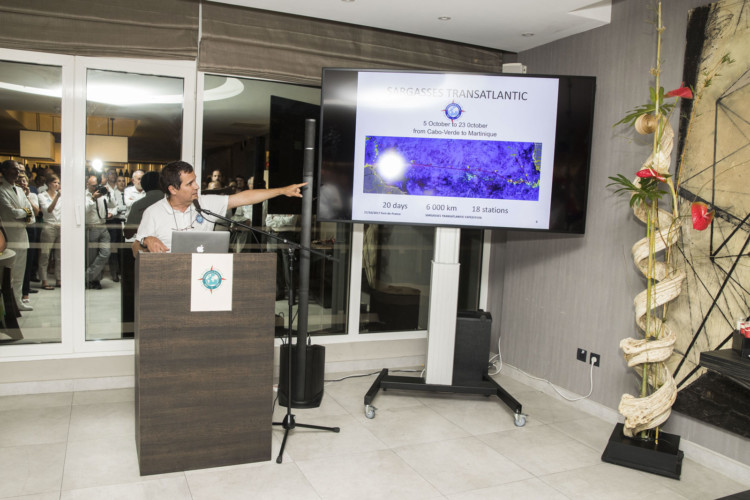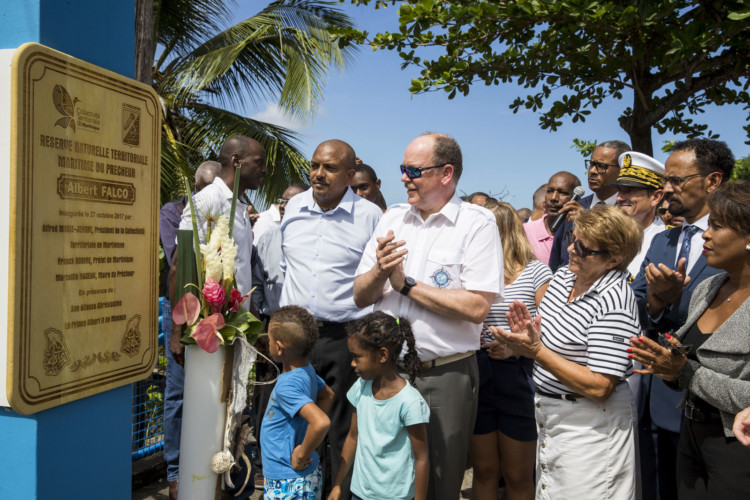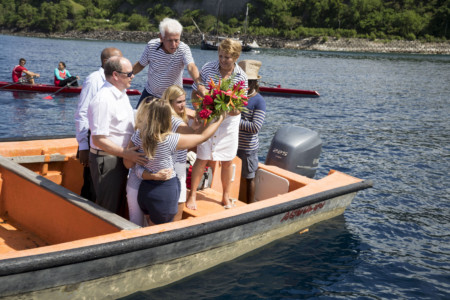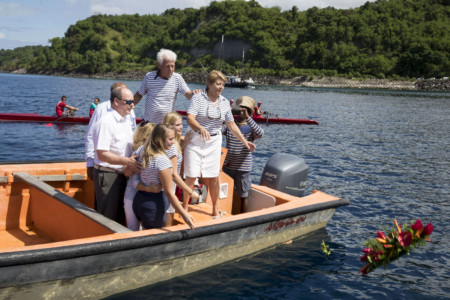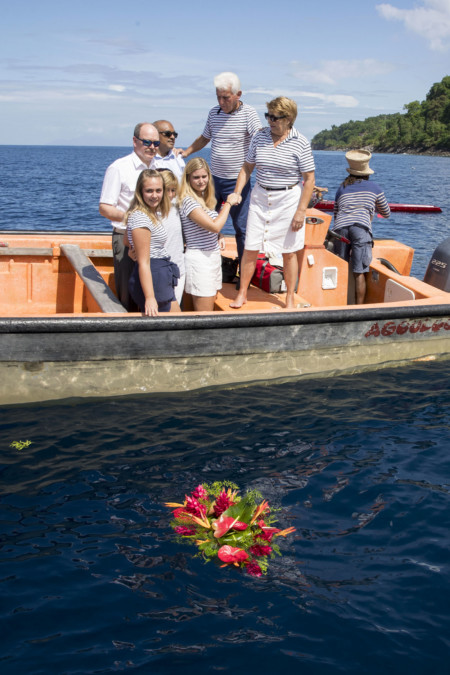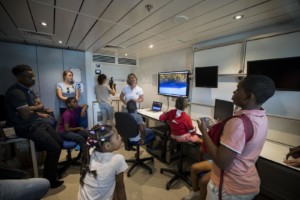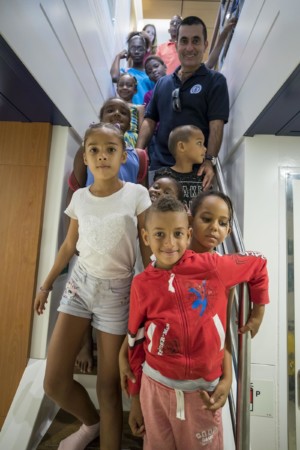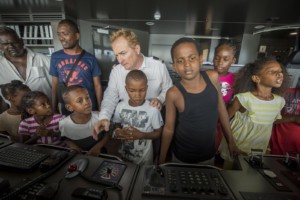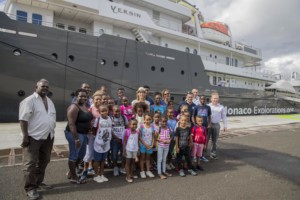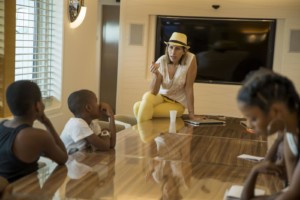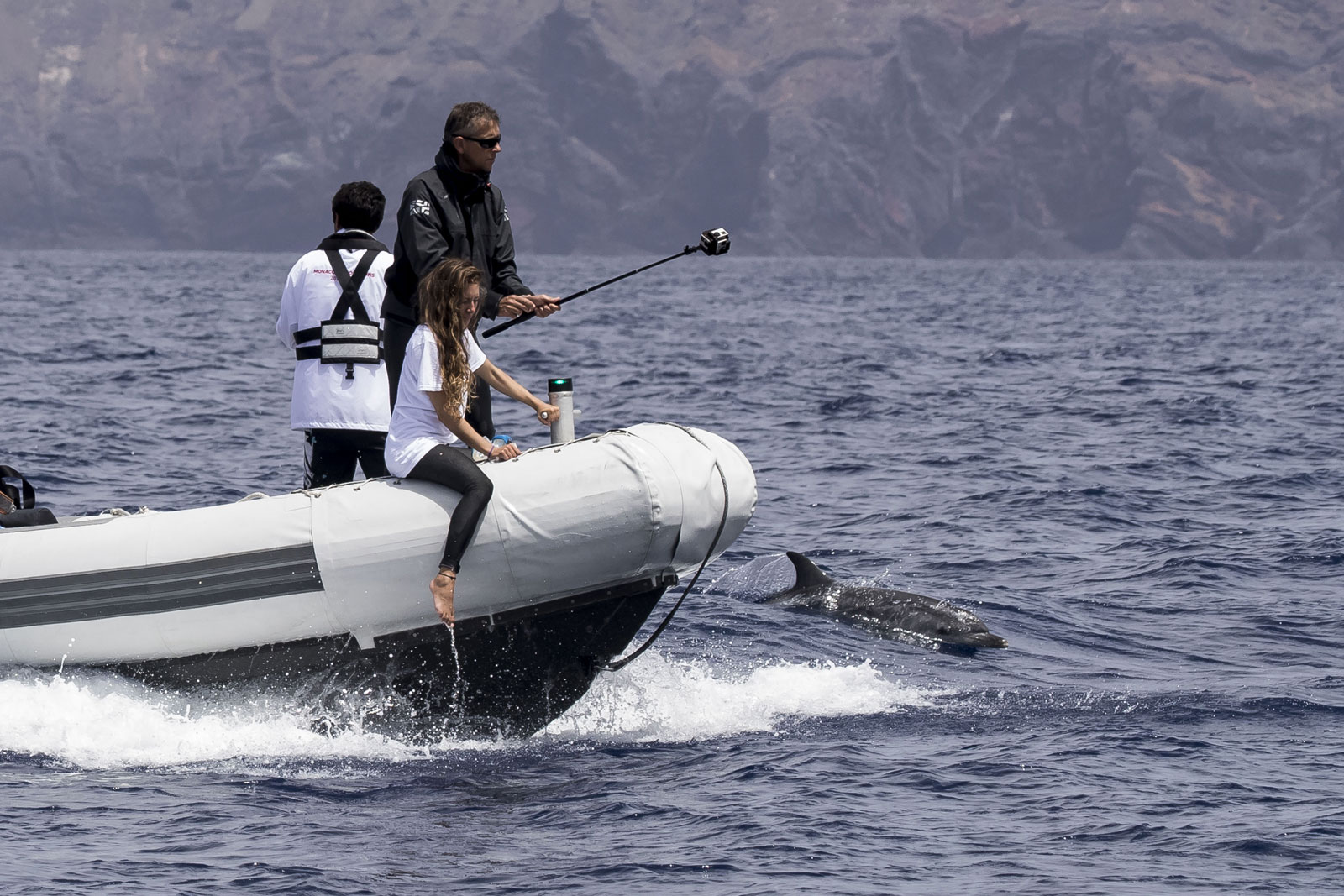
Fabrice joined us on our first mission in 2017 in Madeira and Cabo Verde to capture footage and work on the DarewinProject with his partners Fred Buyle and Olivier Borde. Fabrice is a passionate and fun person to work with and his knowledge about virtual reality, 360 shooting, click communication, and so much more is truly impressive. Fabrice answered a few questions about 360 photos and virtual reality below. Over the next days we will share the 360 photos he captured while on mission with us via our Facebook Page.
Find Fabrice on Vimeo, here in a recent interview, and on Facebook
How do 360 photos work?
360 photos are now very easy to use on social media with your phone, computer or tablet. They don’t require viewing goggles like 360 videos do, and they are easy to share because the file size isn’t too heavy. Anyone with a smartphone can take 360 photos. To get high quality shots, like we did for Monaco Explorations, we used 6 cameras shooting in 4K that allow us to create still shots with 32 million pixels. We then manually edit the images with a specific software program. The main difficulty is getting the right position of the subject, which sometimes gets lost between two cameras, so getting a great shot doesn’t happen each time.
What is the biggest challenge of shooting in 360?
Getting photos of wild animal requires that you are always ready, very patient, and most of all “interesting” so the animal will approach you. For example, with the monk seal I used my fingers to attract a calf, moving them slowly, and he was very curious with that movement so he came close to the camera for the “perfect shot”.
What is unique for the audience to view photos in 360?
If you look at it on a phone, tablet or computer it is just a 360 pic you are looking at, but if you look at it in goggles, it totally changes the perspective, the animal is looking at YOU. 360 and virtual reality bring emotions that are very difficult to create in conventional media.
[vc_row][vc_column][gem_video video_src=”https://www.monacoexplorations.org/videos/EDM_2018_SEASONS_GREETINGS.mp4″ image_src=”27509″][/vc_column][/vc_row]
Season’s greetings Happy Holidays
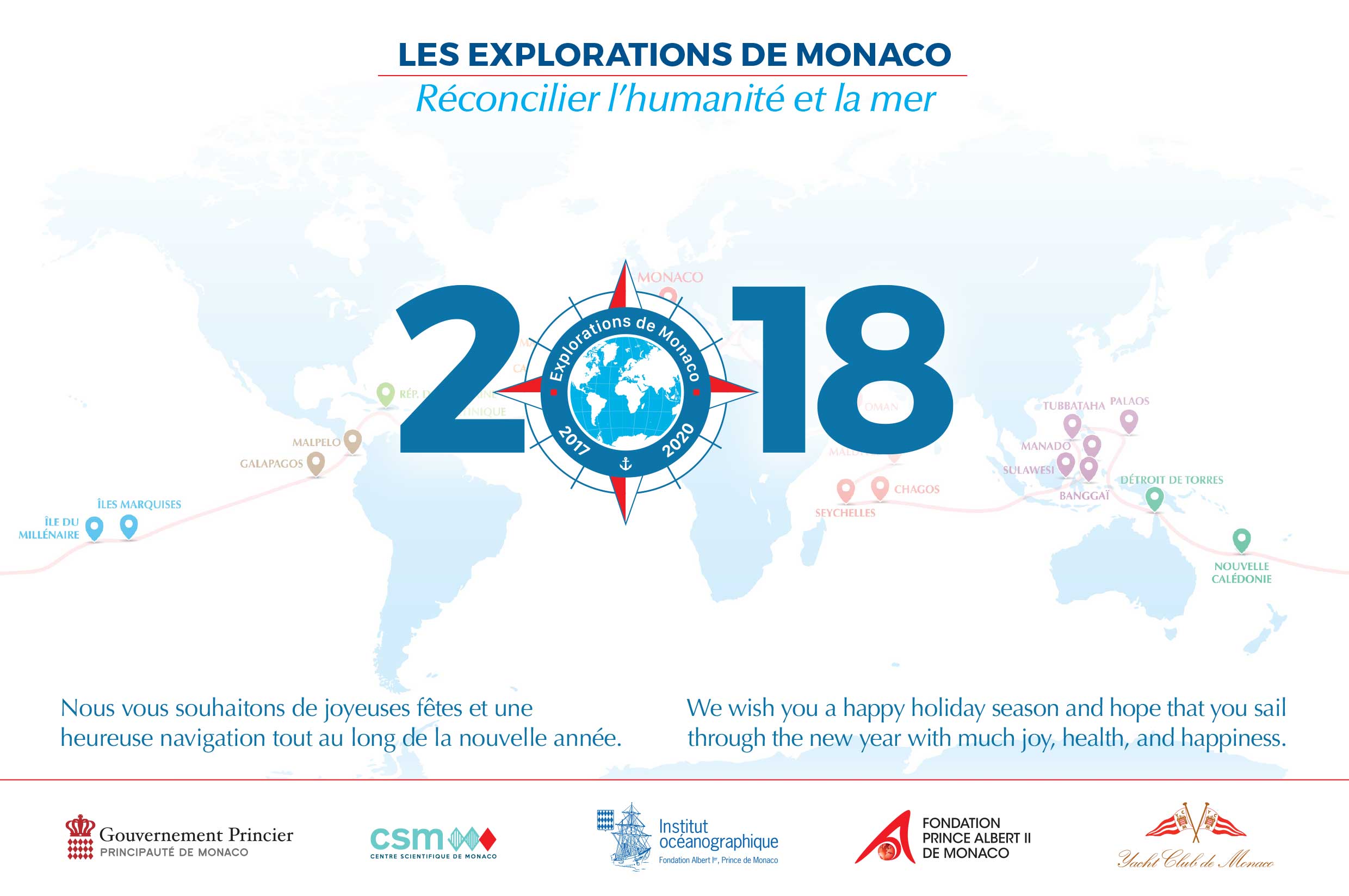
Chrystel Laurent has been a teacher in Morne Vert, Martinique for 8 years. The school where she teaches and the children who live in the small rural village are only 5k from the Caribbean Sea and the beaches of Carbet.
Chrystel tells us that despite the close proximity to the sea, few students regularly go to the water, and even fewer have ever had the opportunity to observe the underwater life with a mask and snorkel. She says her students are passionate about stories or documentaries about maritime life, but do not fully enjoy the richness that surrounds them. Because of this, Chrystel has decided to involve her students in educational projects around the marine environment.
What do your students study about the oceans?
For two years I have been working closely with the association “Mon école Ma baleine”.
The aim is to make children aware of the protection of the marine environment by bringing them subjects of study that will interest them. Marine mammals were the ideal topic to start the project last year. Know more about cetaceans and the environment in which they live to better protect them!
From documentary films, readings, videos, the meeting with François Sarano … the students made two information panels on the dolphin and the killer whale. These panels will be installed on a beach by the town hall of Carbet. They also made a big painting fresco to decorate the school.
This year, the same students are continuing the project and are interested in animals in danger around the world. As for the marine environment, we started this year a work on the monk seal, the manatee and the mangrove, an environment totally unknown to children, yet so close to them. The work will continue throughout the year.
The final goal is the dissemination of writings (posters, books …) produced by children.
Was it impactful for your students to visit Monaco Explorations?
When I introduced Monaco Explorations to my class, the students immediately imagined a boat going on an adventure around the world! The words “scientists on mission” aroused some wonder among many of them. I think that this meeting will first of all feed their imagination, which occupies a big part of development at their age.
I think that seeing the material used, the analysis made in the laboratory, the photos or videos … will allow them to better understand the role of these oceanographic missions around the world.
Will the visit with us help you in your mission to teach students about marine environments?
This meeting will first allow me to change the ideas and knowledge of students. It is important that they understand that protecting the sea is not just about pollution, or overfishing. The visit will allow them to understand that there are scientific missions that directly contribute to the protection of marine environments. Being able to board the boat and ask questions directly to the chef de mission and to the scientists will mark their spirit and make the learning process even easier and more motivating because they will be closer to them after the experience they have had. To build learning effectively, it is important to start from motivating situations for the child and his / her experience.
The Yersin left Mission One in Cabo Verde, Africa on October 5th and headed across the Atlantic Ocean to Fort-de-France, Martinique. During transatlantic travel, the Sargasso mission was carried out which you can read about here.
When the Yersin arrived in Fort-de-France, HSH Prince Albert II and the Monaco Explorations team was there to welcome them. We had a busy few days of events planned.
We extend a big thank you to Maud Fontenoy who joined us in Martinique to give presentations about her adventures at sea as well as her long-time advocacy work. She spoke to a group of schoolchildren onboard the Yersin, to the public in a town hall style presentation in Precheur, and again in Fort-de-France at an event to present the work of the Sargasso mission.
We attended an afternoon ceremony to classify and name the Marine Protected Natural Reserve of Prêcheur as part of the preservation of natural spaces and protection of biodiversity by the Territorial Collective of Martinique. Located in northwestern Martinique, the areaincludes two sites, les îlets La Perle and the Citadelle, as well as 12 km of coastline along Prêcheur, at the foot of the Pelée Mountain.
This new protected area was named the Albert-Falco Marine Territorial Natural Reserve of Prêcheur. The naming is in memory of Albert Falco, lover of the sea and for all the Martiniquais who had the privilege of working with him. The Martiniquais have not forgotten his commitment to the protection and enhancement of the underwater heritage of Saint-Pierre, not to mention his collaboration with Commander Jacques-Yves Cousteau, who has popularized the defense and protection of the marine environment.
Louis Boutrin, Executive Councilor, Marcellin Nadeau, Mayor of Prêcheur, Franck Robine, Prefect of Martinique and HSH Prince Albert II of Monaco hosted the event. Mr. and Mrs. Fiat, Yersin owners, arrived to welcome the family of the late Albert Falco onboard their vessel, and attended a small private ceremony with Mr. Falco’s family, a few friends, and HSH Prince Albert II.
After the naming ceremony, the Collectivité Territoriale de Martinique hosted a town hall presentation for the public to talk about the importance of ocean conservancy and protection, and for Monaco Explorations to present our work.
To read about this event in French, and for additional photos, click here.
In the evening HSH Prince Albert II and Monaco Explorations hosted an event in Fort-de-France to present the work of the Sargasso team and to celebrate the life and work of Albert Falco, and the naming of the Marine Protected Area dedicated in his name.
We were in Martinique for just a few short days, and the Yersin will go in dry dock for the next two months to prepare for future missions. We will be back in early January to start the next mission.
** All photos in this post are courtesy of Olivier Borde
Martinique
Paddle sailor Maud Fontenoy spent two days aboard the Yersin with Monaco Explorations in Martinique. On several occasions over the two days Maud told audiences about her impressive experiences at sea and the actions she has taken through her foundation to protect and conserve the oceans. Her stories of crossing the seas and encountering pollution were touching and impactful.
Photos © Monaco Explorations / O. Borde
Fort de France, Martinique
HSH Prince Albert hosted a gathering in Fort de France to share the work of Monaco Explorations, and specifically the most recent topic, Sargassum, to a crowd of nearly 150 people. Earlier in the day, His Serene Highness was present for the inauguration of the Prêcheur marine reserve.
“Today we have enough perspective to know that marine reserves and protected areas are the best ways to regulate overfishing and protect the ecosystems. One benefit of creating these reserves is that they provide generations of fishermen the ability to continue their livelihood for years to come. Marine protected areas help to protect the marine environments and biodiversity by bringing man and the sea together responsibly.” said Prince Albert II.
Prs Thomas Changeux and Sandrine Ruitton (MIO Aix-Marseille University) shared their first results after 3 weeks of work with Monaco Explorations.
Photos © Monaco Explorations / O. Borde
Le Precheur, Martinique
HSH Prince Albert II of Monaco paid tribute at the Precheur marine protected reserve to the former Captain of the Calypso, Albert Falco, a long time diving companion of Jacques Cousteau. His Serene Highness was surrounded by Falco’s wife, Maryvonne, granddaughters, his friend Michel Metery and the mayor of Precheur, Marcellin Nadeau. Albert Falco was a French scuba diving veteran and champion of underwater conservation. He made large contributions to the discovery and preservation of Martinique’s aquatic ecosystems. Falco passed away in 2012.
Photos © Monaco Explorations / O. Borde
About 20 kids from The Prêcheur’s school and Marcel Ravin’s l’Esperance association visited the Yersin and discovered Monaco Explorations.
Maud Fontenoy talked about her experience and her foundation to protect seas, Sandrine Ruitton said a lot about her research on sargassum, Didier Zoccola presented sciences at sea and the boat’s labs, and captain Jean Dumarais offered a tour into the Yersin. Great day !
Read Monaco Exploration and the Yersin are in Fort de France (FranceAntilles.fr).
